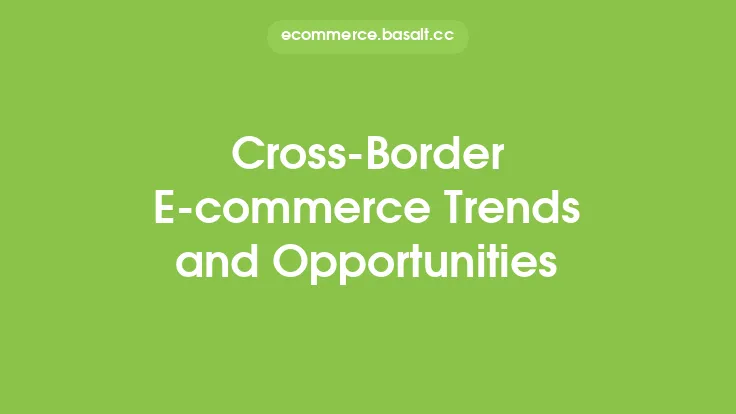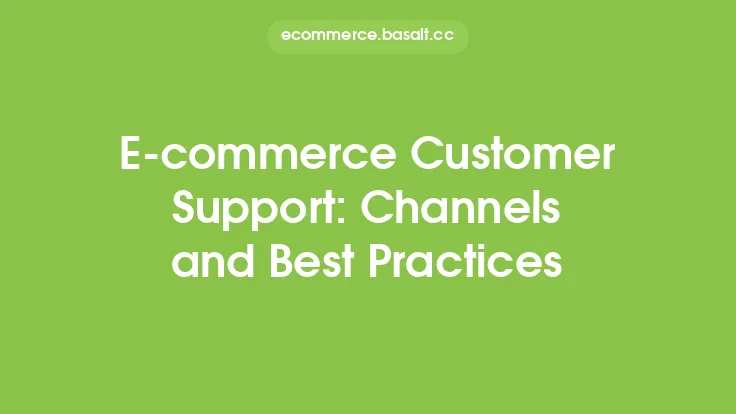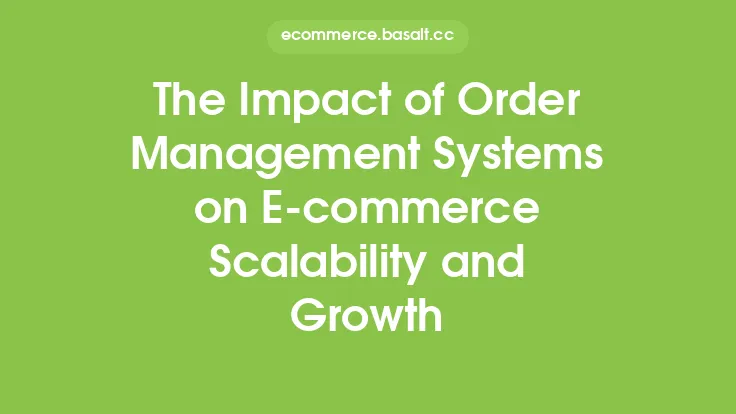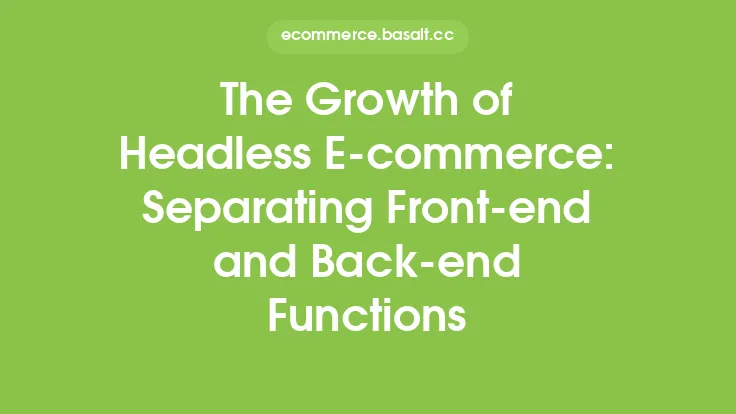The e-commerce industry has experienced unprecedented growth in recent years, and this trend is expected to continue as more consumers turn to online shopping for convenience, variety, and competitive pricing. As the industry expands, businesses are constantly looking for new opportunities to increase their market share and stay ahead of the competition. Identifying new markets and channels is crucial for e-commerce growth, and there are several strategies that businesses can use to achieve this goal.
Identifying New Markets
One of the most effective ways to drive e-commerce growth is to identify new markets that have not been fully exploited. This can involve expanding into new geographic regions, targeting new demographics, or offering products and services that cater to specific niches. For example, businesses can explore emerging markets in Asia, Latin America, or Africa, where there is a growing middle class with increasing disposable income. Alternatively, they can focus on specific demographics such as millennials, baby boomers, or seniors, each with their unique preferences and shopping habits. By understanding the needs and preferences of these new markets, businesses can tailor their products and services to meet the demand and establish a strong presence.
Exploring New Channels
In addition to identifying new markets, businesses can also explore new channels to reach their target audience. This can include social media platforms, online marketplaces, and mobile apps, each with its unique features and user base. For instance, social media platforms like Facebook, Instagram, and Twitter can be used to build brand awareness, engage with customers, and drive traffic to e-commerce websites. Online marketplaces like Amazon, eBay, and Alibaba can provide businesses with access to a large customer base and a wide range of products and services. Mobile apps, on the other hand, can offer a seamless and personalized shopping experience, with features like push notifications, loyalty programs, and exclusive offers. By leveraging these new channels, businesses can increase their online visibility, improve customer engagement, and drive sales.
Leveraging Data and Analytics
Data and analytics play a critical role in identifying new markets and channels for e-commerce growth. By analyzing customer data, businesses can gain insights into shopping behavior, preferences, and demographics, which can inform their marketing strategies and product offerings. For example, data analytics can help businesses identify the most profitable customer segments, the most effective marketing channels, and the most popular products and services. This information can be used to optimize marketing campaigns, improve customer targeting, and increase the overall efficiency of e-commerce operations. Additionally, data analytics can help businesses monitor their performance in real-time, identify areas for improvement, and make data-driven decisions to drive growth and profitability.
Building Strategic Partnerships
Building strategic partnerships is another key strategy for e-commerce growth. By partnering with other businesses, e-commerce companies can expand their product offerings, improve their supply chain efficiency, and increase their market reach. For instance, businesses can partner with suppliers to offer a wider range of products, with logistics providers to improve delivery times and costs, or with technology companies to enhance their e-commerce platforms. Strategic partnerships can also provide businesses with access to new markets, new technologies, and new expertise, which can help them stay competitive and drive growth. By building strong partnerships, businesses can create a robust ecosystem that supports their e-commerce operations and drives long-term success.
Investing in Digital Marketing
Digital marketing is a critical component of e-commerce growth, and businesses must invest in digital marketing strategies to reach their target audience and drive sales. This can include search engine optimization (SEO), pay-per-click (PPC) advertising, email marketing, and social media marketing, each with its unique benefits and challenges. For example, SEO can help businesses improve their search engine rankings, increase their online visibility, and drive organic traffic to their e-commerce websites. PPC advertising, on the other hand, can provide businesses with a quick and effective way to reach their target audience, drive traffic, and generate sales. By investing in digital marketing, businesses can increase their online presence, improve customer engagement, and drive e-commerce growth.
Enhancing Customer Experience
Finally, enhancing customer experience is essential for e-commerce growth. Businesses must focus on creating a seamless, personalized, and engaging shopping experience that meets the needs and expectations of their customers. This can involve offering fast and reliable shipping, providing easy returns and refunds, and offering competitive pricing and promotions. Additionally, businesses can use technologies like artificial intelligence (AI) and machine learning (ML) to personalize product recommendations, offer real-time customer support, and improve the overall shopping experience. By enhancing customer experience, businesses can increase customer loyalty, improve customer retention, and drive positive word-of-mouth, which can lead to long-term growth and profitability.





